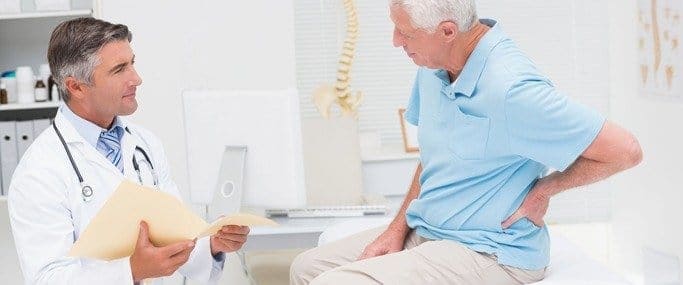June 3, 2024

Low back pain does not discriminate. It happens to break down after years of bearing one’s weight. Injuries and other health conditions can have an impact on spinal health as well.
For aging individuals, low back pain causes are usually due to wear and tear on the body. Arthritis, especially osteoarthritis, and spinal stenosis are major issues for the aging population. In some cases, the vertebrae may actually slip or slide out of place. The final result is a pain.
There are a variety of low back pain sympto lose flexibility as well. Victims of low back pain accompanied by leg pain or numbness in the legs could be dealing with a narrowing of the canal around the spine or their vertebrae could be shifting out of place.
For aging adults who suffer back pain that strikes suddenly and is severe, spinal compression fractures could be to a lack of calcium and loss of bone density, something as simple as a cough could cause a spinal compression fracture and debilitate low back pain.
Low back pain can also be caused by less common conditions, such as tumors on the spine, infections, and fibromyalgia, which causes pervasive pain throughout the body. Ankylosing spondylitis, Piriformis syndrome, and Coccydynia also cause low back pain. With so many possible conditions that can affect the back, it is important for victims of back pain toms of low back pain.
For anyone who has suffered from back pain, whether it is for a short duration or chronic, finding effective low back pain treatment is essential for a better quality of life. This especially holds true for older adults who may become less mobile and more prone to provide relief. Chiropractic adjustments and physical therapy are often effective, as well as steroid injections. Surgery is usually the last result when all else fails for the treatment of low back pain for older adults suffering from back pain.
Dr. Lev Kalika is a world-recognized expert in musculoskeletal medicine. with 20+ years of clinical experience in diagnostic musculoskeletal ultrasonography, rehabilitative sports medicine and conservative orthopedics. In addition to operating his clinical practice in Manhattan, he regularly publishes peer-reviewed research on ultrasound-guided therapies and procedures. He serves as a peer reviewer for Springer Nature.
Dr. Kalika is an esteemed member of multiple professional organizations, including: